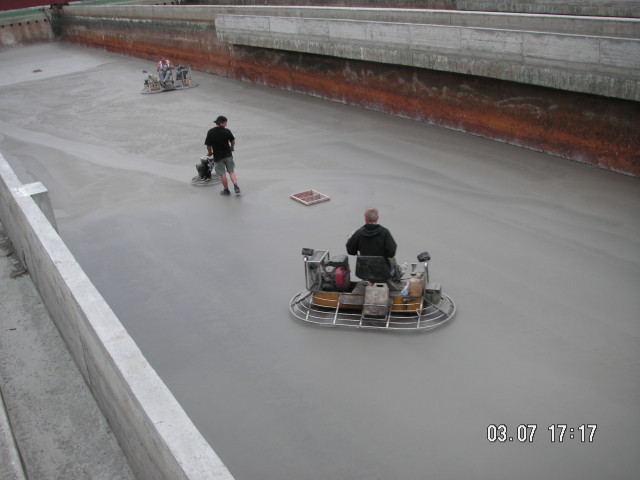SLUDGE HOPPERS IN longitudinal tanks
The folklore1 in placing and sizing sludge hoppers exceeds any expectation of the newcomers. "Oldcomers" know that the fight with folklore in design of final clarifiers is endless, though successful2,3,4. Nevertheless, folklorists are valuable. Without them science would be sometimes boring.
In primary and in industrial settling tanks sludge hoppers are correctly placed at the inlet end, just below the inlet structure. The reason is obvious - heavy suspended solids sunk straight into a relatively large hopper and do not have to be transported by scrapers for a long distance. This approach and philosophy is wrong at final clarifiers.
Other locations of the hoppers
Placement of hoppers at the end of the tanks reduces the adverse effects of excessive kinetic and potential energy.
The mid-length hopper design is a method applied at very large clarifiers, where a single scraper cannot handle the large area.
Design with two or more hoppers is a quite irrational folklore and can be forgotten.
Scrapers
Both, non-metallic chain and flight scrapers and reciprocating scrapers (http://www.nordicwater.com/en/index.cfm/product-groups/zickert) safely handle an area of about 700 m2, though a few installations were designed for area up to 1 000 m2 with a single chain and flight scraper (for instance WWTP Salzburg, Austria - ARA Siggerwiesen).
Typical references
|
Case A: Clarifiers 85 x 12 m. Combination of con-current and counter-current reciprocating sludge scraper system (ZICKERT). No sludge hopper. Excellent performance! |
Case B: Clarifiers 60 x 12 m. Con-current non-metallic chain and flight scraping system (DEWA). No sludge hopper. Excellent performance! |
Case C: Clarifiers 36 x 9 m. Con-current non-metallic chain and flight scraping system (FINNCHAIN). No sludge hopper. Excellent performance! |
Theory
Theoretical approach is illustrated on the case C abolve. Old, shallow final clarifiers were reconstructed to con-current non-metallic chain and flight scraping system. Mathematical modeling of the sludge layer for maximum design flow yields the figure below: Blanket concentration vs. Height. The recycled sludge concentration does not depend on the geometry of the clarifier but on the mass balance around the clarifier only, see the chapter Definitions and Mass Balance. Sludge layer above the recycled sludge uptake is more than 1 m high. A hopper would have no benefit because there is nothing to improve in terms of sludge uptake. At the minimum design flow the sludge layer is of course shallower but the influence on potentially fluctuating sludge uptake concentration on the activated sludge system is negligible. At small flows practically all sludge is in the anoxic/oxic tanks and minor fluctuation of the recycled sludge concentration, even if exists, does not influence anything.
Sludge uptake in systems without hoppers requires an appropriate arrangement, such as for instance Zickert SIPHON or similar. Similarly, suction tubes manifolds have proved perfect.
 |
Mathematical modelling of sludge blanket
|
In brief, at properly designed, up-to-date longitudinal tanks, sludge hoppers depending on location, size etc. have neutral or negative influence on the clarifier hydraulics and increase investment cost. Recycled sludge concentration does not depend on clarifier geometry (including hoppers) but on mass balance around the clarifier.
Practice

Reconstruction of a large clarifier - no sludge hopper left.
Conclusions
Up-to-date, practically continuous con-current sludge scraping in sufficiently deep clarifiers, together with sophisticated sludge uptake, does not need sludge hoppers. Many installations in several countries in last decade, generating crystal clear effluents, prove the theory, though folklore and amateurism in design still survive.
1 Traditional customs, tales, sayings, dances, or art forms preserved among people; an often unsupported notion, story, or saying that is widely circulated (Merriam-Webster Dictionary).
2 Dick Richard I. (1976). Folklore in the design of final settling tanks. Journal Water Pollution Control Federation, 48, pp. 633-644.
3 Parker D. S., Kinnear D. J., and Wahlberg E. J.: Review of Folklore in Design and Operation of Secondary Clarifiers. J. Environ. Eng. 127, 476 (2001).
4 Wahlberg Eric J.: Folklore in Activated Sludge Treatment Plant Operations. Rocky Mountain Water Environment Association 65th Annual Meeting, September 17, 2002.
|
|
|
|---|